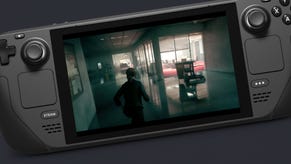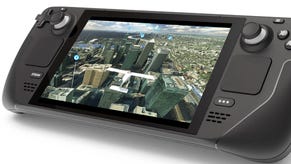Metro Exodus on Stadia looks as good as Xbox One X - but doesn't run as well
4K rendering comes at a cost.
One of the best single-player first-person shooters of the generation, Metro Exodus is an ideal match for Google's Stadia platform. Developer 4A Games not only has a pedigree for excellent multi-platform releases, it's also exhibited strong support in the past for Linux - the underlying platform on which Stadia is based. The question is, just how has 4A chosen to make use of the system's Intel-based CPU and 10.7 teraflop GPU and is the expectedly superior level of performance we expect delivered by Google's cloud-based servers?
Let's cut to the chase - there's one thing above all others that I respect about this version: the coreimage quality. Stadia pushes a native 3840x2160 in every shot I've tested - no small feat given the demanding nature of the engine. And while I can't 100 per cent rule out dynamic resolution scaling, it's been very consistent at that top number - I can't fault it. So in this respect, it's a key improvement over the last Stadia title I tested - Final Fantasy 15 - which operated at just 1080p. The bottom line is that if you're using Stadia with Chromecast Ultra and you have the Pro subscription, you are getting 4K and Metro Exodus does look stunning.
The pay-off for a narrative-focused game like Metro Exodus is clear. From the pulse of specular highlights in its damp metro tunnels to the crisp snowy overground, everything pops that much more. The story gets propelled to a greater height this way. Certainly much more so than PS4 Pro's 1440p delivery, it puts Stadia essentially on the same level as Xbox One X. Sadly, there's no quality or performance modes at all in the settings. You just have options for motion blur intensity, and that's it. It's is a one-size fits all approach which, again like FF15, means you've got to be onboard with the developer's choices. This is well pitched though. In a multiplayer FPS, yes, it may have been better to priority to aim for a higher frame-rate - seeing as we're stuck at 30fps here. But in this case, it works. You can expect a supremely sharp presentation all round.
One factor that holds Stadia back from matching Xbox One X quality is video encoding quality. Generally speaking, the streaming is top notch in most games - when it works - but Metro Exodus is unique by design. It takes on a much darker colour palette than most titles, with lots of trawling through dark spaces. And the blunt truth is that, as a result, the darker points of the image show more compression artefacts. Google's encoder works to minimise the size of each frame by pruning back quality on low contrast areas - which makes sense. But detail in dark areas is an issue with any bandwidth-constrained video encoder, creating obvious bands between points of shade. And therefore, in comparison with Xbox One X's uncompressed video output, it does start to undo the positives of rendering at 4K.
This is the nature of the beast really - and nothing that can be held against the developer. At the rendering level, Metro Exodus looks as great as ever it did on consoles: It's simply producing a type of video content that doesn't always compress easily. Equally, the use of snow particles, and potentially film grain, gives the encoder more challenges, even in the light of day. There's a lot of per-pixel data being added in post and 4A's signature high frequency texture detail is a lot for the video encoder to handle. It's not a deal-breaker at all, but shows up more readily than other games I've tried. With that being said though, the core settings used on Stadia hold up well. What we're looking at here is parity with Xbox One X across the board.
From the 4K image, down to the use of screen-space reflections, Stadia is a match for Microsoft's enhanced consoles. Even shadows and textures are the same. Everything here appears to pair up with PC's high preset with tessellation disabled - nothing more, or less. In a way, that's a shame given the ripe potential for more. Stadia is, on paper, the more powerful machine of the two, purely in specs; a 10.7TF GPU versus Microsoft's 6.0TF equivalent. And yet that doesn't come across in the visual parity we're getting. It's great to see 4K, certainly, but PC features like tessellation would have been the next step. In our original analysis we saw some great use of tessellated brickwork that didn't make the grade on console - and it hasn't made it to Stadia either.
Another area that I expected to see a more radical improvement is in loading times. Just looking at Stadia on its own, Metro takes around a minute to load each area from the main hub. It's part of this very modular design 4A Games has gone for in splitting the story across different regions - accessible on a world map. But with that comes some really long pauses - something that was a bother on console too, in fairness. Stadia has much improved media access speeds - and it worked out in faster loading in Final Fantasy 15 - but here, it's still far from ideal. You do get a moment to fill in the narrative blanks and it is better than Xbox One X, but overall, I expected better from server-grade storage.
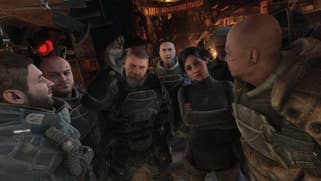

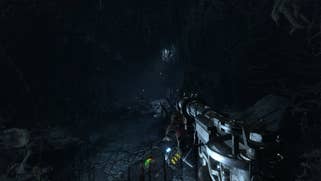


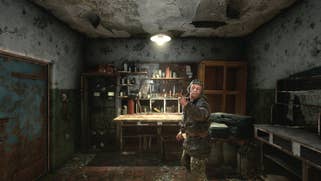


There's a final topic to address which is a touch disappointing: performance. Everything so far points to an Xbox One X-like experience on Stadia, which is great - but only if the frame-rate can hold, and you'd assume it would. With Stadia apparently offering more power on tap and operating with equivalent settings to what we understand to be a less powerful machine, performance should be on par - or better. And yet that's somehow not translated across.
The bulk of play is at the same 30fps as the X, but taxing effects - like transparencies - cause more of a hit to performance than they do on the Microsoft machine. Shoot-outs situated in areas lavish in lighting and fog effects run worse on Stadia, and for a console way ahead in its reported GPU power, it's not quite there. In some scenarios, frame-rate can even drop down to 20fps territory. Add in some stuttering and frame-pacing troubles and it doesn't feel as well optimised as it should be. In similar scenarios on Xbox One X, we're looking at a straight 30fps.
It's also worth noting that input lag in Metro Exodus is noticeably on the high side. Anecdotally speaking, adding around 44-55ms of latency to a game which already had a bit of input lag does it no favours and it makes precise shooting in action scenes very challening. Some games translate to a streaming platform better than others; RPGs and adventure titles with fixed camera tend to work better. Here though, the disconnect between controller and reaction is far more noticeable.
Metro Exodus is tuned by 4A Games to target the premier visual experience, rather than anything else. 3840x2160 at around the high setting is impressive stuff, at least, if not everything I'd entirely hoped for. What that costs in performance isn't what I'd expected. Sub-30fps readings from a 10.7TF GPU are puzzling to say the least. There's no doubt that it's a gorgeously presented game and it's also a step up from the support Final Fantasy 15 received - but once again, the quoted power of Stadia isn't translating into the real-life performance gains we'd expect compared to the established 'pro' consoles.



